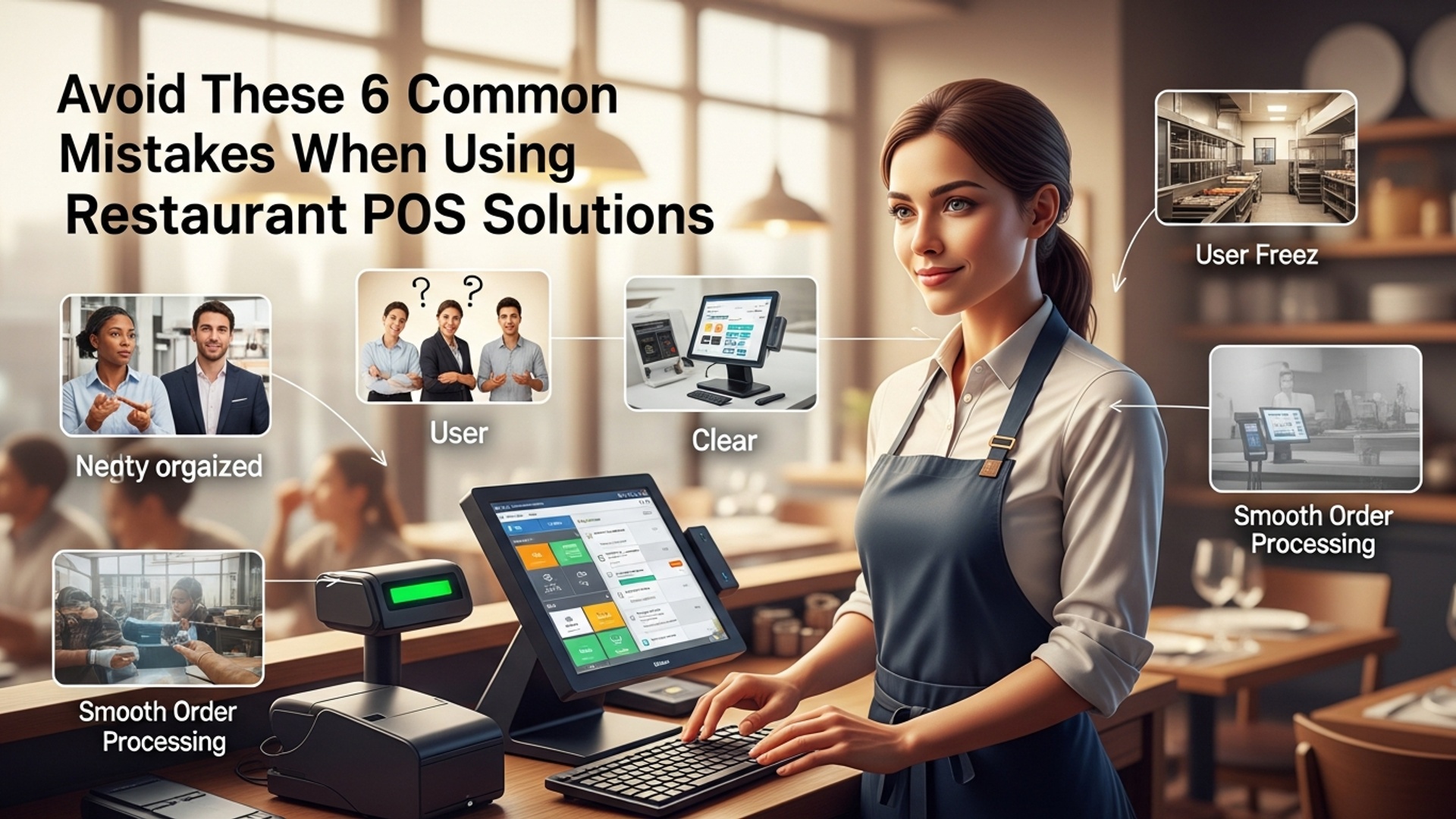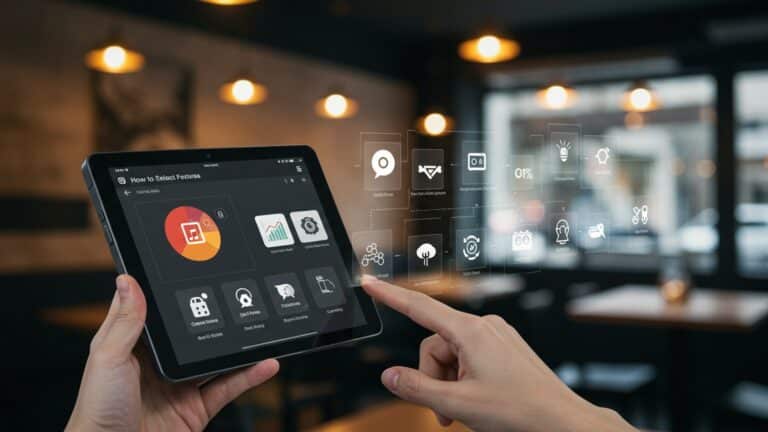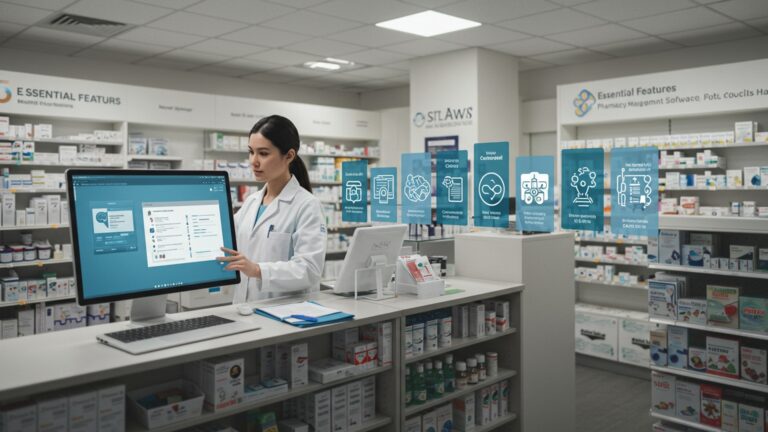Avoid These 6 Common Mistakes When Using Restaurant POS Solutions
In today’s fast-paced hospitality landscape, a robust restaurant POS software solution is no longer a luxury but a critical operational backbone, streamlining everything from tableside ordering to complex inventory management and integrated third-party delivery platforms. Yet, despite significant advancements like AI-driven sales forecasting and contactless payment processing, many establishments inadvertently undermine their technology investment through preventable missteps. A poorly configured system can bottleneck service during peak hours, lead to costly stock discrepancies, or even expose sensitive customer data, turning a powerful tool into a significant liability. Recognizing these common operational vulnerabilities empowers operators to maximize system efficiency and safeguard their bottom line in an increasingly competitive market.

1. Neglecting Comprehensive Staff Training
One of the most frequent and costly errors businesses make with their Restaurant POS software is underestimating the critical role of thorough staff training. A sophisticated POS system, no matter how intuitive, is only as effective as the people operating it. Without proper instruction, employees can make mistakes that lead to slow service, inaccurate orders, payment processing issues. ultimately, a poor customer experience.
Imagine a busy Friday night. A new server, rushed and unfamiliar with the POS interface, accidentally rings in the wrong dish for a table of four. This error leads to wasted food, a delayed order. a frustrated customer, all because they weren’t properly trained on how to navigate the menu modifiers or correct an entry. Similarly, failing to train staff on advanced features like splitting checks, applying discounts, or handling returns can create bottlenecks at peak times.
- Structured Training Programs
- Ongoing Refreshers
- Resource Library
- Designated POS Champions
Develop a formal training program for all new hires, covering every aspect of the POS system relevant to their role. Don’t just show them once; provide hands-on practice.
Conduct regular refresher courses, especially when new features are rolled out or system updates occur. Even experienced staff can benefit from revisiting best practices.
Create an accessible internal knowledge base or ‘cheat sheet’ with step-by-step instructions for common tasks and troubleshooting tips. This could be a printed manual, a digital document, or even short video tutorials.
Appoint a few tech-savvy team members as ‘POS champions’ who can provide on-the-spot support and act as a first point of contact for staff questions.
Industry experts, like those at Toast and Square, consistently emphasize that successful POS implementation hinges on strong user adoption, which is directly tied to the quality of training provided. A well-trained team can leverage the full power of your Restaurant POS software, turning it into a significant operational asset rather than a source of frustration.
2. Choosing the Wrong Restaurant POS Software for Your Needs
The market for Restaurant POS software is vast, offering a myriad of solutions tailored to different types of eateries. A common pitfall for many restaurant owners is selecting a system that doesn’t align with their specific operational requirements, leading to inefficiencies, unnecessary costs. missed opportunities. What works perfectly for a quick-service cafe might be completely inadequate for a fine-dining establishment or a multi-location chain.
- Quick Service vs. Full Service
- Single Location vs. Multiple Locations
- Integration Ecosystem
Quick-service restaurants (QSRs) often prioritize speed, ease of order entry. integrated online ordering. Full-service restaurants (FSRs) need robust table management, complex order modification. potentially handheld ordering devices.
A single-location restaurant might thrive with a simpler, less integrated system. Multi-location businesses require centralized management, consolidated reporting. consistent menu deployment across all venues.
Does your restaurant rely heavily on third-party delivery apps, loyalty programs, or advanced inventory management? Your POS system must be able to integrate seamlessly with these tools.
Consider a local pizzeria that initially chose a basic tablet-based POS designed for small retail. While it handled simple transactions, it lacked crucial features like customizable pizza toppings, delivery management. detailed order tracking. This forced staff to use manual workarounds, causing errors and slowing down service. Switching to a specialized pizza POS system with built-in customization options and delivery routing dramatically improved efficiency and customer satisfaction.
- Conduct a Needs Assessment
- Request Demos
- Read Reviews and Case Studies
- Consider Scalability
Before even looking at vendors, document your restaurant’s unique workflows, pain points. desired features. Involve key staff members in this process.
Don’t just read brochures. Schedule live demonstrations with potential vendors and ask them to show you how their system handles your specific scenarios.
Look for reviews from similar businesses and inquire about references. Platforms like Capterra or G2 can be invaluable here.
Choose a system that can grow with your business. If you plan to expand or add new services (e. g. , catering, online retail), ensure the POS can accommodate these future needs without a complete overhaul.
3. Ignoring Valuable Data and Analytics
Modern Restaurant POS software is far more than just a cash register; it’s a powerful data analytics engine. A significant mistake many restaurateurs make is failing to tap into the wealth of details their POS system collects daily. This oversight means missing out on crucial insights that can drive better decision-making, optimize operations. significantly boost profitability.
- Sales Trends
- Menu Item Performance
- Employee Performance
- Customer Data
- Inventory Usage
Hourly, daily, weekly. monthly sales performance.
Bestsellers, slow movers, profit margins per dish.
Sales per server, average transaction times.
(If integrated with a CRM or loyalty program) purchasing habits, visit frequency.
What’s selling and how quickly, helping to prevent waste and stockouts.
A popular downtown cafe consistently ran out of their signature avocado toast by mid-morning on weekends. Their POS system, But, was tracking every sale. By regularly pulling sales reports, the owner discovered a clear pattern: the toast’s sales peaked sharply between 8 AM and 10 AM, far exceeding their initial ingredient orders. Using this data, they adjusted their Saturday and Sunday ingredient prep, ensuring they always had enough to meet demand, leading to increased sales and happier customers.
- Schedule Regular Report Generation
- Focus on Key Performance Indicators (KPIs)
- Utilize Data for Menu Engineering
- Optimize Staffing
- Personalize Customer Experiences
Make it a habit to pull and review key reports (e. g. , daily sales, weekly menu performance) at a set time.
Identify the metrics most essential to your business (e. g. , average check size, food cost percentage, table turnover rate) and use your POS data to track them.
grasp which dishes are popular and profitable. Use this data to refine your menu, promote high-margin items, or remove underperforming ones.
examine sales data by hour and day to predict peak times and adjust staffing levels accordingly, reducing labor costs during slow periods and ensuring adequate service during busy ones.
If your POS integrates with a CRM, use customer purchasing history to offer targeted promotions or personalized recommendations.
Leveraging the analytical capabilities of your Restaurant POS software transforms raw data into actionable intelligence, providing a competitive edge and fostering sustainable growth.
4. Neglecting Security Updates and Protocols
In an age where data breaches are unfortunately common, overlooking the security aspects of your Restaurant POS software is a critical mistake that can have devastating consequences. Restaurants handle sensitive customer insights (credit card numbers) and proprietary business data, making them prime targets for cyberattacks. Neglecting security updates and failing to implement robust protocols leaves your business vulnerable to data theft, fraud. significant reputational damage.
- PCI Compliance
- Malware and Ransomware
- Phishing and Social Engineering
The Payment Card Industry Data Security Standard (PCI DSS) is a set of security standards designed to ensure that all companies that process, store, or transmit credit card data maintain a secure environment. Non-compliance can lead to hefty fines and loss of credit card processing privileges.
Outdated software can have vulnerabilities that hackers exploit to inject malware, potentially locking down your system or stealing data.
Staff can be tricked into revealing login credentials, providing a backdoor into your POS system.
- Regular Software Updates
- Strong Password Policies
- Role-Based Access Control
- Network Security
- Staff Education
- Regular Backups
Always install updates and patches provided by your Restaurant POS software vendor. These often contain crucial security fixes that address newly discovered vulnerabilities.
Enforce the use of complex, unique passwords for all POS users and require regular password changes. Consider multi-factor authentication (MFA) if your system supports it.
Limit access to sensitive POS functions based on an employee’s role. For example, only managers should have access to void transactions or modify prices.
Ensure your Wi-Fi network is secure, separate from guest Wi-Fi. protected by a strong firewall.
Train staff on cybersecurity best practices, including how to recognize phishing attempts, the importance of not sharing login details. proper handling of customer data.
Implement a robust data backup strategy to ensure business continuity in case of a system failure or data breach.
Treating your POS system’s security as an ongoing priority, rather than a one-time setup, is essential for protecting your business, your customers. your reputation. Work closely with your POS vendor to comprehend and implement all recommended security measures.
5. Failing to Integrate with Other Essential Systems
In today’s interconnected business landscape, a standalone Restaurant POS software system, no matter how powerful, is often an underutilized asset. A common mistake is failing to integrate the POS with other critical operational systems, leading to manual data entry, inconsistencies, increased labor costs. a fragmented view of your business. Seamless integration is key to achieving true operational efficiency and a unified data ecosystem.
- Inventory Management
- Online Ordering & Delivery
- Accounting Software
- Customer Relationship Management (CRM) & Loyalty Programs
Without POS integration, every sale needs to be manually deducted from inventory. Integration automates this, providing real-time stock levels, reducing waste. preventing stockouts.
Manual entry of online orders into the POS is prone to error and slows down service. Integrated systems push orders directly to the kitchen, streamlining the process.
Manual reconciliation of sales data with accounting software is time-consuming and prone to errors. Integration automates financial reporting, making bookkeeping easier and more accurate.
Linking your POS to these systems allows you to track customer purchase history, manage loyalty points. offer personalized promotions automatically.
Comparison: Integrated vs. Standalone Systems
Feature/Aspect Integrated Restaurant POS Software Standalone Restaurant POS Software Data Entry Automated, minimal manual input Manual duplication across systems Real-time Data Yes, across all connected systems No, data silos exist Operational Efficiency High, streamlined workflows Low, prone to bottlenecks Error Reduction Significantly reduced Higher risk of human error Reporting & Analytics Comprehensive, holistic business view Fragmented, limited insights Customer Experience Enhanced (e. g. , personalized offers) Basic, limited personalization
- Prioritize Integration during Selection
- Leverage Cloud-Based Solutions
- Consider All-in-One Platforms
- Consult with Your Vendor
When choosing a Restaurant POS software, make a list of all systems you currently use or plan to use (e. g. , accounting, inventory, online ordering, reservations). Inquire about native integrations or API capabilities.
Many modern cloud-based POS systems are designed with open APIs, making integration with other cloud services much simpler.
Some POS vendors offer comprehensive suites that include features like inventory, CRM. online ordering directly within their system, eliminating the need for separate integrations.
Discuss your integration needs with your POS vendor. They can often provide guidance or facilitate connections with popular third-party tools.
By connecting your POS to the broader ecosystem of your restaurant’s operations, you create a powerful, cohesive system that saves time, reduces errors. provides a clearer, more accurate picture of your business’s health.
6. Underestimating Ongoing Support and Maintenance Needs
Many restaurant owners view the implementation of new Restaurant POS software as a one-time project. But, underestimating the need for ongoing support, maintenance. regular updates is a common mistake that can lead to significant downtime, missed revenue. operational headaches down the line. A POS system is the central nervous system of your restaurant; if it falters, your entire operation can grind to a halt.
- Technical Issues
- Software Updates
- Training & Onboarding
- Compliance Changes
Hardware failures, software glitches, network problems – these can happen at any time, often during peak business hours. Quick resolution is paramount.
Vendors regularly release updates for security enhancements, new features. bug fixes. Keeping your system current is vital for optimal performance and data protection.
As staff turnover occurs, new employees will need training. Access to support resources for ongoing training is invaluable.
Payment processing regulations (like PCI DSS) and tax laws can change. Your POS system and its support team should help you stay compliant.
A popular family diner experienced a complete POS system crash on a busy Saturday morning due to an unforeseen software conflict. Their vendor’s support plan only offered email assistance with a 24-hour response time. The diner was forced to revert to manual order taking and cash-only payments for hours, resulting in lost sales, frustrated customers. significant stress for the staff. Had they invested in a support plan with 24/7 phone or chat assistance, the issue could have been resolved much faster, minimizing the disruption.
- Evaluate Vendor Support Plans
- interpret Service Level Agreements (SLAs)
- Budget for Maintenance and Upgrades
- Regular System Health Checks
- Stay Informed on Updates
Before committing to a Restaurant POS software, thoroughly review the vendor’s support offerings. Look for details on response times, channels (phone, chat, email), hours of operation (24/7 is ideal for restaurants). included services (e. g. , remote troubleshooting, on-site visits).
Clarify what level of service you can expect for different types of issues.
Factor in potential costs for hardware replacement, software licensing renewals. premium support plans into your annual budget.
Encourage regular internal checks of hardware and software to catch potential issues before they become critical.
Pay attention to communications from your POS vendor regarding new software versions and critical updates. schedule these updates during non-peak hours.
Investing in robust ongoing support and maintenance for your Restaurant POS software isn’t an extravagance; it’s an essential insurance policy that protects your operations, revenue. customer satisfaction.
Conclusion
Navigating the complexities of restaurant POS solutions doesn’t have to be a minefield. I recall a bustling pizzeria that almost ground to a halt during a rush simply because their staff wasn’t adequately trained on handling complex order modifications, leading to frustrating delays. This underscores that avoiding common mistakes isn’t just about the software; it’s about how you integrate it into your daily rhythm and empower your team. My personal tip? Treat your POS system as your most valuable, data-driven employee. Proactively invest in continuous, bite-sized training sessions – perhaps focusing on new features like QR code ordering or advanced analytics. Embrace the agility that modern cloud-based systems offer, allowing you to adapt to new trends and customer demands without costly overhauls. By consistently optimizing your POS usage, you’re not just preventing errors; you’re building a resilient, efficient. ultimately more profitable operation, ready to tackle any challenge the dynamic restaurant industry throws your way. For a deeper dive into choosing the right system from the outset, explore how to select the best restaurant POS.
More Articles
How to Choose the Best Restaurant POS System 5 Essential Factors
8 Smart Strategies to Maximize Your Restaurant POS Software Value
Learn 10 Crucial Security Practices for Your Restaurant POS System Data
6 Ways Restaurant POS Improves Customer Service and Efficiency
Unlock Efficiency 6 Common Restaurant Problems Solved by POS Systems
FAQs
Why is proper staff training on the POS so vital for my restaurant?
Investing time in training your team on the POS system ensures everyone knows how to use it efficiently. This means fewer order errors, faster service. smoother operations, which ultimately leads to happier customers and less stress for your staff.
We have all these reports. what’s the big deal if we don’t look at them?
Ignoring your POS reports is like throwing money away! These reports contain goldmines of details about your sales trends, popular menu items, peak hours. even server performance. Analyzing this data helps you make smart decisions about staffing, menu changes. promotions to boost your profits.
How can I tell if our restaurant picked the wrong POS solution in the first place?
If your POS is constantly crashing, difficult for staff to navigate, lacks key features you actually need (like inventory tracking or online ordering integration), or doesn’t scale with your business, it’s likely not the right fit. A good POS should simplify your life, not complicate it.
Should our restaurant’s POS system talk to other restaurant tech, like online ordering apps?
Absolutely! Integrating your POS with other systems like online ordering platforms, kitchen display systems (KDS), or loyalty programs creates a seamless workflow. It reduces manual errors, speeds up order fulfillment. provides a better, more consistent experience for both staff and customers.
What’s the real risk of not keeping our POS software updated?
Ignoring updates leaves your system vulnerable to security breaches, putting customer data and your business at risk. Updates also often include new features and performance improvements that can make your operations more efficient and secure, so you’re missing out on those benefits too.
What happens if our POS system goes down and we don’t have a backup plan?
If your system crashes without a proper backup, you could lose critical sales data, customer insights. even your carefully crafted menu configurations. This can lead to significant downtime, lost revenue. major headaches trying to piece your business back together. Always have a robust backup strategy in place.





